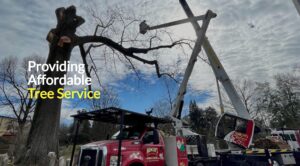What Makes a Building Actually Safe in an Emergency
4 min read
FreePik.com
When people think about fire safety, most imagine sprinklers spraying water everywhere or alarms going off to warn everyone. But there’s way more to keeping a building safe than just that. In a real emergency, lots of different systems need to work together—fast—to make sure everyone can get out and that damage is kept to a minimum. Fire-resistant walls, smoke control systems, and the way exits are placed all play a part.
Let’s break down some of the features that help keep buildings safe, even when things go really wrong.
Smoke Is a Bigger Deal Than You Think
Most people don’t realize this, but smoke can be even more dangerous than the fire itself. It spreads quickly and makes it hard to see, which makes it harder for people to get out safely. It can also fill up escape routes and stairwells, which are the exact paths people need to use.
That’s where smoke control solutions for buildings come in. These systems are made to move smoke out of a building through special vents or openings, keeping the air clearer and making it easier to breathe while people are getting out. They also help firefighters see better when they go in to put out the fire.
Why Alarms Alone Aren’t Enough
Fire alarms are super important. They give people a heads-up that something is wrong. But if an alarm goes off and there’s no plan for where the smoke and heat go, it’s not enough. You still need a clear path to get outside, and that path has to stay safe long enough for everyone to escape.
That’s why alarms are just one part of a bigger safety system. The layout of the building, the doors used, and even the materials in the walls and ceilings all matter. If one thing fails, the others need to keep working so people can still get out.
Fire-Resistant Materials Help Buy Time
Some parts of a building are made with special materials that slow down fire. These include fire-rated walls, ceilings, and floors. They don’t stop fire forever, but they hold it back long enough for people to leave and for help to arrive. This is called “compartmentation,” which just means splitting the building into sections that stop fire and smoke from moving around too fast.
It’s kind of like putting something in a sealed box. If fire can’t jump from room to room quickly, that gives everyone more time to stay safe and exit without panic.
Don’t Forget About Doors, Windows, and Stairs
Doors and windows do more than just open and close. In an emergency, fire doors are designed to stay shut even when it’s super hot. Some have seals that swell up when there’s heat to block smoke. They help trap the fire in one area while people are moving through other parts of the building.
Stairwells are also important. They should always be kept clear, easy to access, and protected from smoke. If smoke gets into a stairwell, it’s way harder for people to use it safely. That’s why ventilation is key.
What Happens on the Roof Also Matters
You might not think the roof has anything to do with staying safe inside, but it actually plays a big role. Some buildings have roof vents that open when there’s a fire. This lets smoke go up and out instead of spreading sideways into more rooms. Roof hatches and vents work with smoke control systems to pull dangerous air away from people.
And for the people who go in after an emergency—like maintenance teams or firefighters—roof access points are needed to inspect damage, reset systems, or make quick repairs. It all ties back to being ready from every angle.
Safety Plans Aren’t Just for Big Buildings
Even smaller buildings need a solid safety setup. Whether it’s a school, office, shop, or apartment block, the same ideas apply. Smoke has to go somewhere. People need to know where exits are. And all the parts—alarms, vents, materials, and design—have to be in place ahead of time.
If any part of the system is missing or not working, it can slow everything down. In an emergency, seconds matter.
The Main Idea
Fire safety isn’t just about stopping a fire. It’s about helping people get out fast, keeping areas clear, and making sure the building holds up long enough to prevent worse damage. From smoke vents and alarms to doors and walls, all the different parts work together.
When buildings are planned with safety in mind, everyone’s better protected—even if the worst happens. It might not be something most people notice day to day, but when it counts, every feature makes a big difference.





